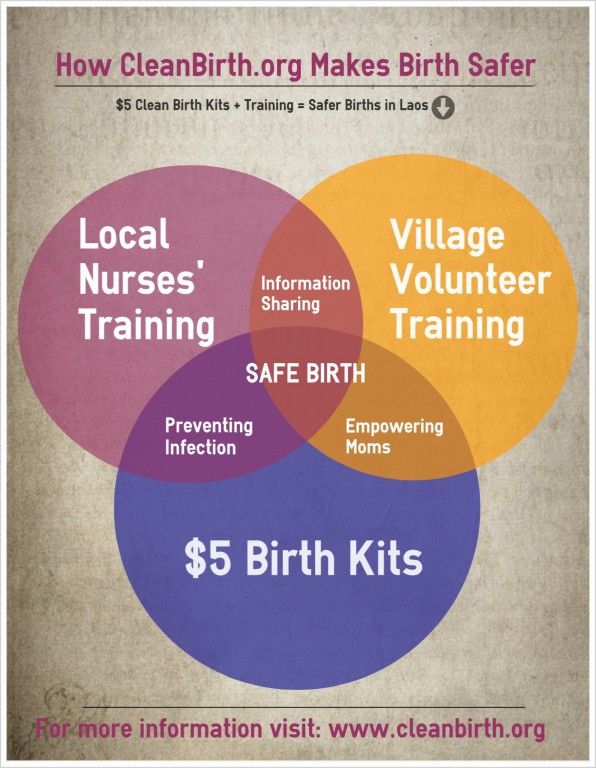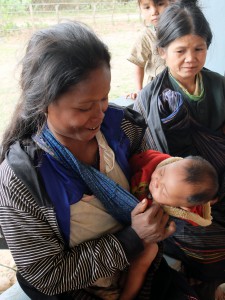Meet Yai, a Mom who used our Clean Birth Kits
Yai, a mom of 4, lost a baby last year. From infection. She lives in Tahoy District in Laos, where now she has access to Clean Birth Kits.
“In the past, my newborn and I got an infection. The baby was not health for two months. Then she died. After using a birth kit for this baby, we are safe and did not get an infection. The cord was clean and dried well. Before I used bamboo to cut the cord and string I found in the house. That’s why my child got an infection. When I took him to see the doctor, he couldn’t help. It was too late.”
We are giving Yai, the volunteers who help her and the nurse in her area the resources they need to make birth infection-free.
For $5 Yai had a safe birth. $5 Saves 2 Lives.
Meet Loy, a CleanBirth.org Village Volunteer
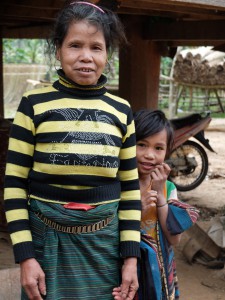
“My name is Loy. I am a midwife in the village. I help the mothers during pregnancy and when they give birth. I have been a midwife for two years. After the training by the nurse in September, I helped two mothers give birth. After using the kit, the mother and child are clean. It’s convenient and easy to use. We need more kits. Without the kits, the mother and child get infection and get sick.”
This year CleanBirth.org’s crowd funding campaign will be working toward training more women like Loy and getting them birth kits. Our goal is to give local women the knowledge and supplies needed to make birth safer for their neighbors.
Three Weeks until Nurses and Volunteers Training in Salavan
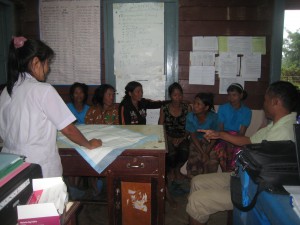
On December 21st, our 2nd Village Volunteers training will take place at Buengkharm Clinic: 3 nurses will train 11 Volunteers.
Not only will these Village Volunteers return home with knowledge about how to make birth safer, they will bring AYZH Clean Birth Kits to pregnant women in their village.
With the generous help of Carol Perks of Save the Children in northern Laos, we have developed a picture tool to track the use of the kits. No reading required!
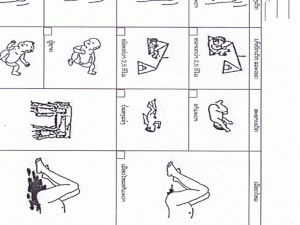
Health Volunteers: Training and Support Needed
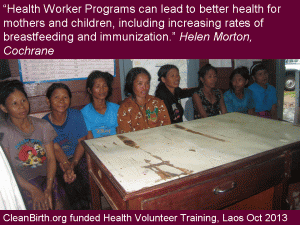
This week several items have got me thinking that we are on the right track to be training health volunteers in each community. However, instead of dreaming about a mobile phone in the hands of every health volunteer, we need to take a step back and ensure that they get the right training and support.
This week I watched a video about new WHO guidelines for “task shifting” from doctors and nurses to health workers. I also read this article about the about health worker training. Both made me think:
We need to make sure that we have a good plan for training and supporting the volunteer health workers, before we give them tangible supplies or cell phones.
A new article from Cochrane, looks at data from 50 qualitative studies of worldwide community health worker initiatives. They identify, according to Helen Morton of Cochrane, eight key factors that could help facilitate success:
1. Community connection: Selecting community health workers with local knowledge and from similar backgrounds to their patients.
2. Incentives: Introducing incentives that community health workers see as fair, consistent and appropriate.
3. Participation: Enabling families and communities to engage in deciding which health services will best meet their needs.
4. Training: Providing sufficient, high-quality and relevant training, including counseling and communication skills.
5. Working conditions: Ensuring a reasonable workload, manageable distances to cover and adequate supplies.
6. Integration: Encouraging clinics and the broader health system to recognise and engage community health workers, and nurses and other health professionals to develop better working relationships with them.
7. Low/no cost services: Delivering health care that is affordable for all.
8. Communication and support: Providing opportunities for community health workers to provide mutual support to one another and building channels for them to voice grievances.
